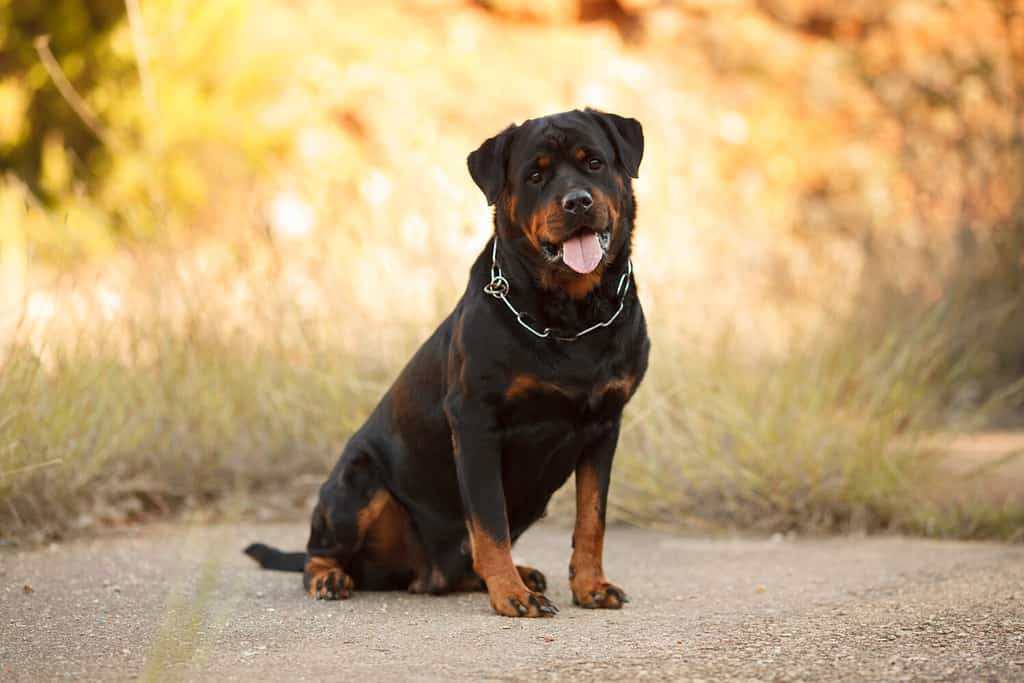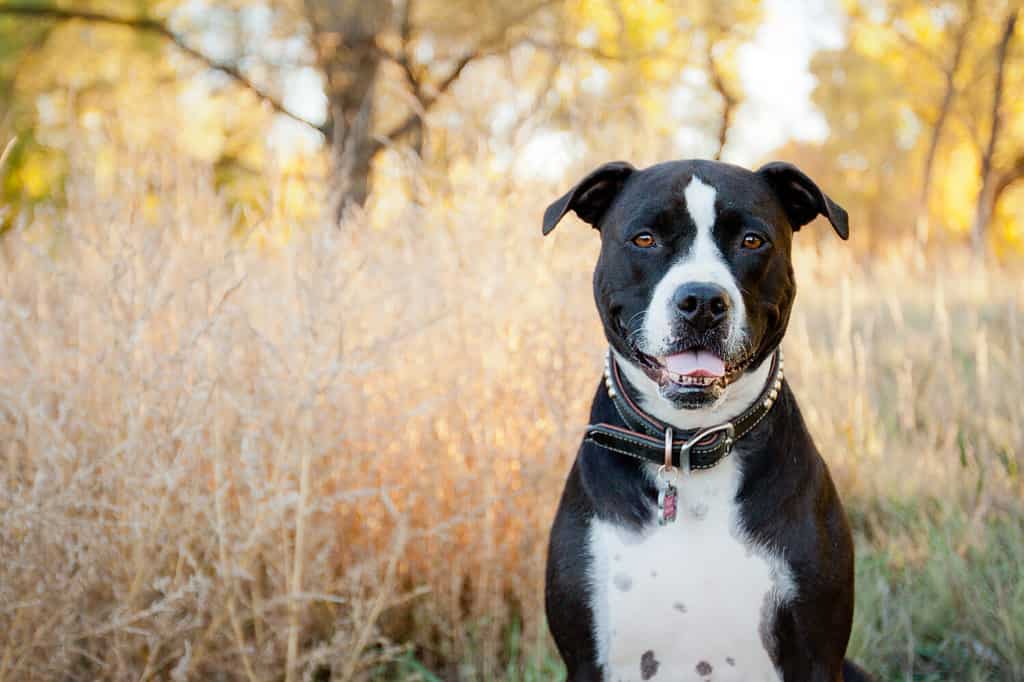I can only go a couple of days without learning of yet ANOTHER new hybrid dog breed! In a merge of loyalty and affection, the Pitweiler — also called a “Rottie” — is a mix of a pit bull and a Rottweiler. By blending the traits of both a Pit Bull and a Rottweiler, potential dog owners will learn everything that they need to know about the Pitweiler. The Pitweiler is truly a best-of-both-worlds breed!

Pitweilers are a mix of both the renowned pit bull and Rottweiler.
©Serova_Ekaterina/Shutterstock.com
History
The Pitweiler is a relatively recent hybrid, mid-sized dog comprised of the pit bull and the Rottweiler. Its prominence in the world of dog species is relatively recent. In fact, the Pitweiler’s popularity emerged only in the past 10 to 20 years. Dog enthusiasts in the United Kingdom bred pit bulls from Old English Bull Dogs in the early 1800s. Unfortunately, owners bred pit bulls for cruel “bull baiting,” where much of this breed’s stigma of aggressiveness originated. The Rottweiler’s origin, however, goes much further back. After the Roman Empire left Germany, the Rottweiler became a working dog until the 20th century. The Rottweiler is named for the town of Rottweil, Germany. The Rottweiler emerged from its familiarity around humans being a herder, guard dog, pack dog, and companion to being a loyal family dog.
Temperament and Personality
The Pitweiler is fiercely loyal and protective of its owners, making it an ideal family pet, especially if it’s trained early. The Pittweiler is patient with children; however, the dog owner must ensure careful monitoring of any dog’s interaction with people, especially very young children. Affectionate and attentive, the Pitweiler makes a great guard dog. However, due to their allegiance, Pitweilers may become aggressive around other dogs, especially if they feel the other dog to be a threat to their owners. Again, owners should be proactive in providing Pitweilers early socialization around dogs and children, which proves extremely beneficial in making the Pitweiler a well-rounded companion.

Pitweilers, this hybrid mix of two beloved breeds, are friendly and loyal companions.
©Ali Peterson/Shutterstock.com
Physical Appearance
Considered a large dog, this Pit Bull and Rottweiler mix grows to between 65 and 100 pounds with a height of 18 to 25 inches at maturity. Obviously, the Pitweiler garners traits from both of its origin breeds, so its color may be black, white, brown, or a tri or multicolor combination. Pitweilers usually possess a muscular build with squared, sturdy shoulders. With a strong jaw and squared head, Pitweilers’ eyes are usually dark brown with a round or almond shape. Pitweilers have short coats, and their fur may either be single-coated like the American Pit Bull Terrier or double-coated like the Rottweiler.
Activity Requirements
Pitweilers require a moderate amount of exercise, at least an hour per day of vigorous running, walking, and/or playing. The Pitwieler may break up its exercise into smaller intervals, such as a morning walk, an afternoon ball chase, or a late afternoon jog. The main goal is to get the Pitweiler moving in order to maintain a healthy weight, an efficient cardiovascular system, and a well-rounded life. Owners who choose early — or later, depending on when they acquire their Pitweiler — obedience training for their Pitweilers enjoy that extra bit of exercise with the simultaneous benefit of developing lifelong healthy habits. Because they are smart, Pitweilers may also enjoy herding events and other social outings and competitions.
Maintenance
As with any furry friend, Pitweilers require maintenance and care to live a full, healthy life. They should eat between 1 ½ and 2 ½ cups of high-quality dog food per day. Most of the time, Pitweilers may split up the feeding into two separate meals. Owners need to bathe Pitweilers only a few times per year. Additionally, they need to brush their pets regularly in order to maintain a sleek, shiny coat. As with most canines, Pitweilers need extra brushing during the spring and fall months when shedding increases. As well, you need to trim your Pitweiler’s nails every couple of weeks to prevent cracking and breaking. Compared to many other breeds, a Pitweiler’s maintenance requirements are reasonable.
Potential Health Problems
As with any breed, Pitweilers may eventually develop a myriad of health problems. Consistent with large-dog breeds, this pit bull and Rottweiler mix is predisposed to hip and elbow dysplasia. The Pitweiler may also experience joint and arthritis issues, especially as they age. Pitweilers face this predisposition due to genetics and to the mere fact that large-breed dogs experience more joint issues. Aiming for a healthy weight and lifestyle will mitigate these potential health problems. Additionally, regular veterinarian visits will help to promote all-around health and longevity for your pitbull.
The Bottom Line
If well cared for, Pitweilers can expect to live a long life of 12 to 16 years. Because of their parent breeds, this mix of pit bull and Rottweiler are excellent guard dogs and companions. With proper socialization and training, the Pitweiler will make an outstanding addition as a beloved family pet!
The photo featured at the top of this post is © cynoclub/Shutterstock.com
Ready to discover the top 10 cutest dog breeds in the entire world?
How about the fastest dogs, the largest dogs and those that are -- quite frankly -- just the kindest dogs on the planet? Each day, AZ Animals sends out lists just like this to our thousands of email subscribers. And the best part? It's FREE. Join today by entering your email below.
Thank you for reading! Have some feedback for us? Contact the AZ Animals editorial team.






